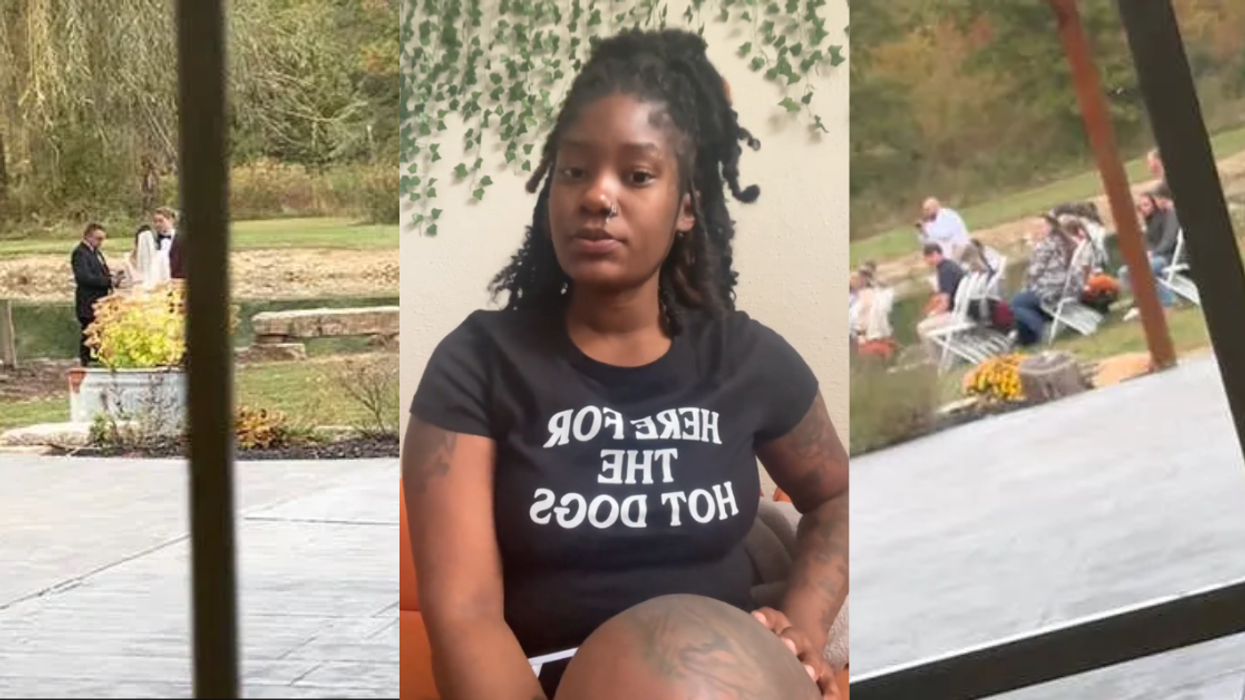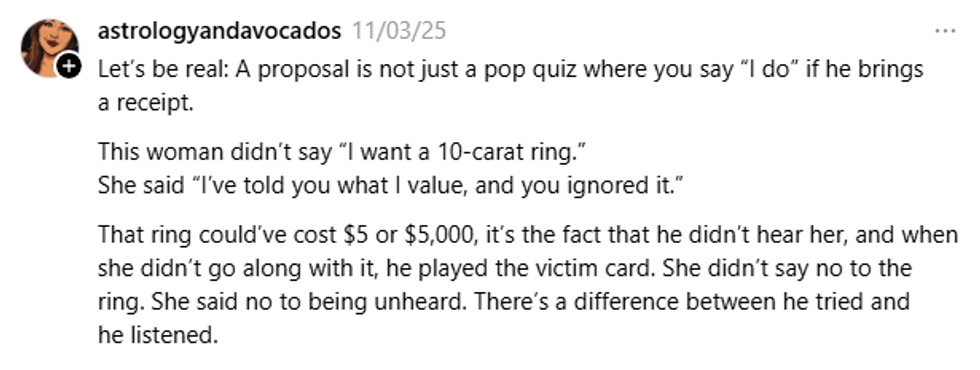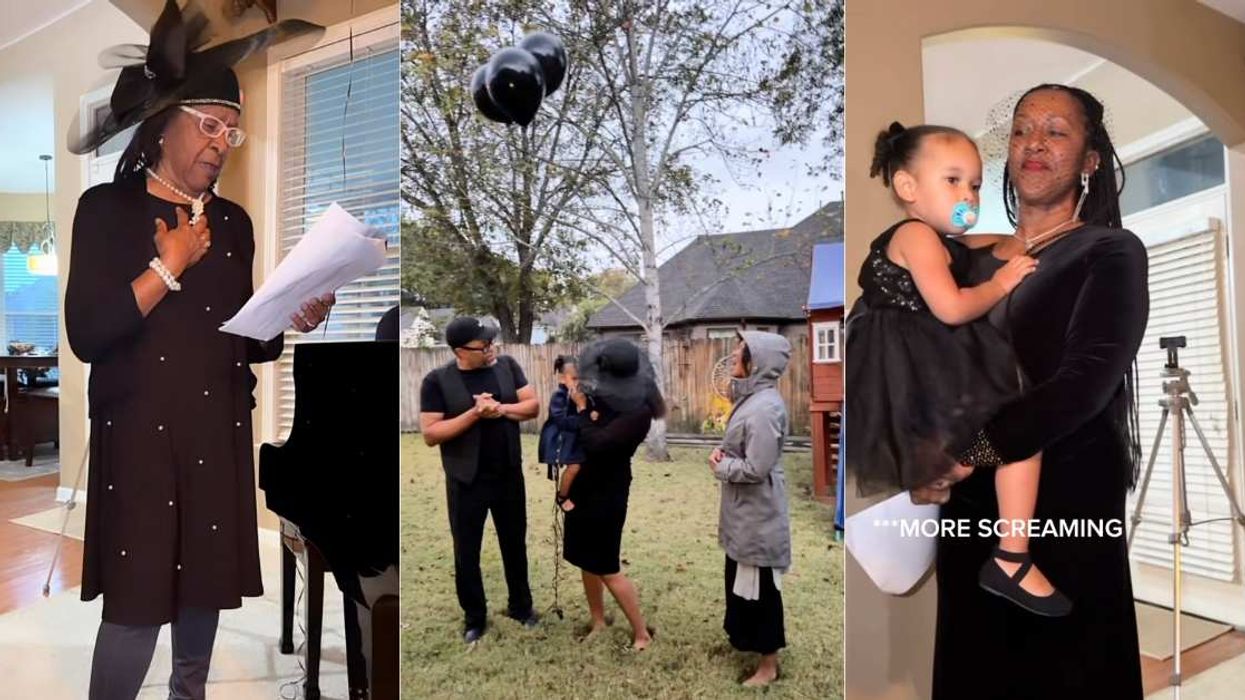After years of battling agonising arthritis, Emma Calland, was diagnosed with ankylosing spondylitis (AS).
A rare long-term inflammatory condition causing the small bones in the back to fuse and, which can eventually turn the spinal column into one long bone, resembling a bamboo stalk.
Calland was forced to quit her teaching job last year, as constant pain means she can only stand for a few minutes.
But, she said her worst moment came four years ago when her daughter Sadie woke with hip pain and could not get out of bed.

Sadie was diagnosed with Ehlers-Danlos syndrome (EDS) type three. A rare inherited condition affecting the connective tissue, which means she has loose, unstable joints that dislocate easily, fragile skin prone to breaking, bruising and joint pain.
“We suspect she might be going down the same route as me," Calland said.
The diagnosis was devastating for her daughter, especially when she discovered she had a host of other health problems.
“She was only 11 and went dancing three times a week," she said.

“Then her period started and a month later she could not walk. The condition was always there, but it was kick-started by her hormones," she continued.
Sadie was also diagnosed with postural tachycardia syndrome, an abnormal increase in heart rate that occurs after sitting up or standing. Sadie suffers from anxiety and has a vitamin D deficiency, too.
“I will never forget it all happening, " said Calland.
“Sadie had hip pain and we assumed she had pulled something, because she had been away at an adventure camp."

“But, one morning, when I went to get her up for school, she could not stand. It was just too painful in her hips and lower back," said Calland.
“I said she should rest for a few days, but it wasn't getting any better so we took her to the GP who prescribed pain relief, but is wasn't touching it."
Sadie was diagnosed with EDS and given a wheelchair to use for a few weeks. Now, she walks aided by a crutch and sticks.
“She recently dislocated her hip, as the collagen – the main component of connective tissue – in her body is so defective that it can't keep her joints in place properly," said Calland.
“She can walk now – sometimes with a stick – but it's been a long journey."
Calland understands too well what her daughter is going through, as her crippling pain from AS leaves her breathless and unable to stand for more than five minutes, and it can leave her too exhausted to eat.

AS can run in families, and that a particular gene known as HLA-B27 can be inherited from another family member, according to the NHS. Now, Calland fears that Sadie may develop the horrendous condition, too.
“I wouldn't wish this on my worst enemy, yet along on my own daughter, who I love," she said.
Calland's arthritis first emerged 15 years ago, when she started having hot, sharp, throbbing pains in her feet.

But her AS diagnosis came just two years ago, after the bones in her spine fused in a fixed position.
“I used to love seeing live music, wearing high heels and dancing, but I can't do that anymore. I used to be able to stand for hours baking cakes and cooking meals, but I can't now – nor can I run or cycle," she said.
Calland first started looking into her symptoms when she was 42 and was told she had rheumatoid arthritis.

“It's quite alarming. You see people at hospital with the condition who are stooped over or bent to one side," she said.
“I have faith that it won't happen to me because I am on the most advanced medication."
“I take 10 tablets in the morning, three at lunchtime and six at night."

“I also have biologic injections once a fortnight," she explained.
"These are protein-based drugs derived from living cells cultured in a laboratory and work by interrupting the immune system signals involved in the damage of joint tissue and a weekly injection of Methotrexate, which also reduces the activity of the immune system."
Calland also began taking medication for depression and anxiety four years ago.
“I would be surprised if other people with this condition aren't on antidepressants," she said.
“You have down days and you feel quite low because this is your life now and there is no cure. It can become completely overwhelming."
But her greatest support has been her children.
“My children have been brilliant," she said. “They know when I need help. I don't always have to ask."
“I'm in the most pain when I first wake up in the morning and it takes me a while to get up."

“After breakfast, I take Sadie to school – I have an automatic car, which makes things less painful," she added.
“But when I come home afterwards I often have a sleep for about two hours, because I'm so exhausted."

“It's like my body is a war zone and my nerves get interrupted by the fighting," she said.

She is keen to raise awareness of AS and to encourage people to be more understanding towards those who are living with the condition.
“There's not enough kindness and understanding for people with long-term conditions," she said.
“Because AS comes under the arthritis umbrella, people think it's the same thing and that everyone gets as they get older."
“It's not. This disease attacks your eyes, liver, kidney, lungs, heart – everything."

“Some disabilities and conditions are harder to see," she said.
Praising the National Axial Spondyloarthritis Society (NASS), Calland said their local support groups have helped her to explain her condition to other people.
“There are online support groups, too, and it's important to speak to other people who have experienced it. The general public do not know enough about AS and I want to change that," she said.








 @realDonaldTrump/Truth Social
@realDonaldTrump/Truth Social @realDonaldTrump/Truth Social
@realDonaldTrump/Truth Social @P78/Truth Social
@P78/Truth Social






 big brother pop GIF by Big Brother After Dark
big brother pop GIF by Big Brother After Dark 
 Unimpressed Get It Together GIF
Unimpressed Get It Together GIF  The Bachelor Shut Up GIF by BuzzFeed
The Bachelor Shut Up GIF by BuzzFeed  customer service waiter GIF
customer service waiter GIF 
 @prissyxoxo25/Threads
@prissyxoxo25/Threads @prissyxoxo25/Threads
@prissyxoxo25/Threads @prissyxoxo25/Threads
@prissyxoxo25/Threads @prissyxoxo25/Threads
@prissyxoxo25/Threads @prissyxoxo25/Threads
@prissyxoxo25/Threads @prissyxoxo25/Threads
@prissyxoxo25/Threads @prissyxoxo25/Threads
@prissyxoxo25/Threads @prissyxoxo25/Threads
@prissyxoxo25/Threads @prissyxoxo25/Threads
@prissyxoxo25/Threads @prissyxoxo25/Threads
@prissyxoxo25/Threads @prissyxoxo25/Threads
@prissyxoxo25/Threads @prissyxoxo25/Threads
@prissyxoxo25/Threads @prissyxoxo25/Threads
@prissyxoxo25/Threads
 @randomthoughts2226/TikTok
@randomthoughts2226/TikTok @randomthoughts2226/TikTok
@randomthoughts2226/TikTok @randomthoughts2226/TikTok
@randomthoughts2226/TikTok @randomthoughts2226/TikTok
@randomthoughts2226/TikTok @randomthoughts2226/TikTok
@randomthoughts2226/TikTok @randomthoughts2226/TikTok
@randomthoughts2226/TikTok @randomthoughts2226/TikTok
@randomthoughts2226/TikTok @randomthoughts2226/TikTok
@randomthoughts2226/TikTok @randomthoughts2226/TikTok
@randomthoughts2226/TikTok @randomthoughts2226/TikTok
@randomthoughts2226/TikTok
 @lookitskateeee/TikTok
@lookitskateeee/TikTok @lookitskateeee/TikTok
@lookitskateeee/TikTok @lookitskateeee/TikTok
@lookitskateeee/TikTok @lookitskateeee/TikTok
@lookitskateeee/TikTok @lookitskateeee/TikTok
@lookitskateeee/TikTok @lookitskateeee/TikTok
@lookitskateeee/TikTok @lookitskateeee/TikTok
@lookitskateeee/TikTok @lookitskateeee/TikTok
@lookitskateeee/TikTok @lookitskateeee/TikTok
@lookitskateeee/TikTok @lookitskateeee/TikTok
@lookitskateeee/TikTok